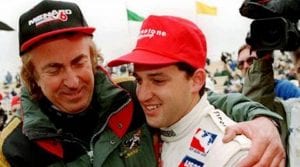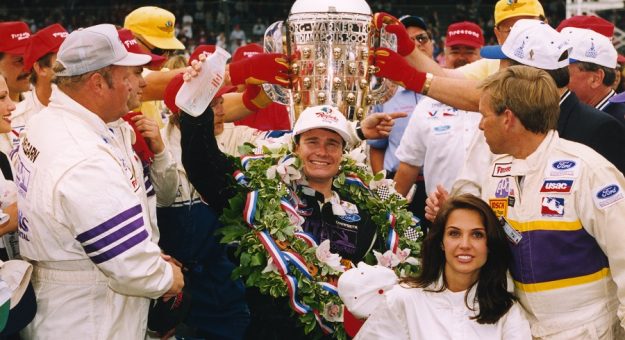The Indianapolis 500 is an institution banked in more than 100 years of tradition with more than its share of milestone events.
Perhaps the most momentous of those occurred 25 years ago.
Two years of controversy proceeded that eventful month of May, initiated by the announcement of a new all-oval series, the Indy Racing League, in direct competition with CART, the established sanctioning body for Indy car racing.
That promptly divided Indy car racing into two hostile camps. While some parties initiated attempts to unite the factions, hostility escalated to warfare when the IRL announced the infamous 25/8 rule, reserving 25 starting spots in Indy’s 33-car starting field for teams that regularly competed in IRL races.
CART teams boycotted the speedway and scheduled the U.S. 500 for the same day at Michigan Int’l Speedway.
“A lot of us didn’t really believe it was gonna happen,” remarked Jimmy Vassar in a conversation with ABC Sports. “We believed we’d still be there. We were kind of stunned we ended up in Michigan …”
The split became a hopeless chasm and remained so for 12 destructive years. Indy car racing nose-dived in popularity, while NASCAR, already on an unprecedented upswing, took possession of the prime spot in the hearts of American auto racing fans.
When May 1996 rolled around, the speedway was confronted with a situation that saw most of the well-known teams and drivers committed to the race in Michigan. Said IMS President and IRL founder Tony George, “Certainly, the sport is in transition. I feel very strongly that this is a unique year, an unusual year in all respects. And, yes, there are a lot of new names.”
There certainly were. When Indianapolis 500 qualifying ended, more than half the starting field was filled with unknown rookies with a few exceptions. Among them were supermodified racing veteran “Double O” Joe Gosek, and Tony Stewart, who won the USAC Triple Crown in 1995. Stewart won midget, sprint car and Silver Crown titles in the same season but would have never gotten an Indy car ride without the IRL.

Even then it was a circuitous route.
A.J. Foyt tested Stewart and passed. Jonathan Byrd definitely wanted him and claimed he was the next Rich Vogler. But Byrd’s team co-owner, Fred Treadway, preferred someone with more experience and name recognition and chose 1990 Indy 500 winner Arie Luyendyk.
Team Menard’s team manager Larry Curry was aware of Stewart’s short-track prowess and, like Byrd, was a believer in Stewart’s raw talent. After much discussion, Curry persuaded John Menard to give him an opportunity.
Menard’s team was one of the best-funded in all of Indy car racing. He’d invested millions producing his own engine, with Sonny and Butch Meyer doing the development. In 1995, Scott Brayton put his Menard-powered Lola on the pole for the Indianapolis 500 and returned with Menard in ’96.
Along with Stewart, Eddie Cheever was also a member of Menard’s powerhouse operation, and once practice opened, the three immediately topped the speed charts. They were joined by Luyendyk, the sole former 500 winner entered, Scott Sharp with A.J. Foyt Racing and Buddy Lazier as favorites for the pole.
Despite the lack of name drivers, Pole Day provided superb drama with record speeds. Stewart fulfilled his early billing by taking the provisional pole with one and four-lap records. Most thought one of his teammates would knock him from that coveted spot, but they proved disappointingly slow.
Luyendyk, who had lost an engine in morning practice, finally got back on the track with less than 30 minutes of qualifying time remaining and snatched away the pole, setting more track records.
But more drama remained. Despite the risk of encountering a problem that would leave him out of the field, Team Menard pulled Brayton’s car and sent him back out in a backup car. Fifteen minutes before the gun sounded ending qualifying, Brayton stormed to a four-lap record and bumped Luyendyk to second.
The Pole Day drama didn’t end at 6 p.m., however. During post-qualifying inspections, Luyendyk’s car was found to be seven pounds underweight. He was out. He’d have to qualify another car on another day to make the field.
The disqualification seemed to inspire him to even greater speed during the second day of qualifying as the Dutchman set a pair of records that still stand today. He turned a one-lap standard of 237.498 mph with a four-lap average of 236.986 mph.
To continue reading, advance to the next page.
